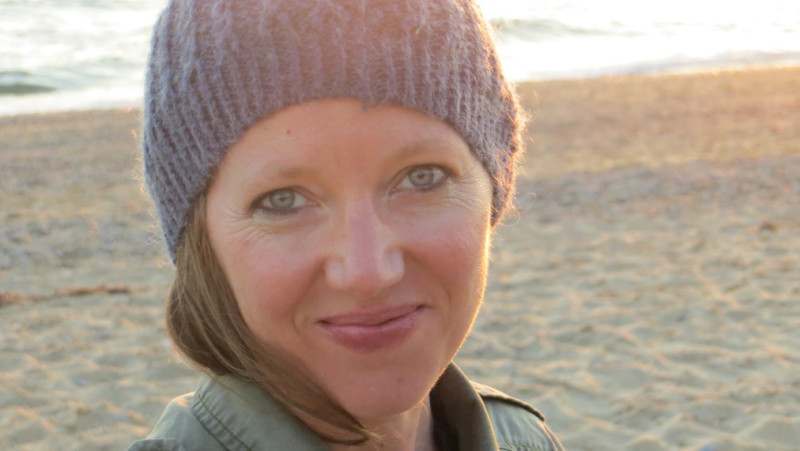In The Argonauts, you write the following about pregnancy: “Is there something inherently queer about pregnancy itself? . . . How can an experience so profoundly strange and wild and transformative also symbolize or enact the ultimate conformity?” Pregnancy and motherhood, including the details of the birth of your son, compose a good chunk of The Argonauts. It seems like there are a lot of birth stories out there already. Why write about pregnancy, and in turn, motherhood, in this way?
I can actually count two, on my hand, birth stories I’ve ever read in the first person by another person who’s given birth. I think it’s a faulty meme that’s been told many times. The two I read most recently were by Karl Ove Knausgård and Philip Lopate, about their wives’ births, and I thought, “Well, if that’s compelling, it certainly might be compelling for me to give my birth experience.”
But I didn’t write the story down with the aim of publishing it. I wrote it down just a few days after I came home from the hospital, just because I’m a writer and I try to write things down so I don’t forget them. I’d been working on this project in different ways, part of it was a talk about Eve Sedgewick, and part of it came from a short essay I wrote in a zine for my friend A.L. Steiner’s show Puppies and Babies. It wasn’t really until later in the game that I married some of that diaristic writing into those pieces. It wasn’t like I saw a need in the culture and set out to fill it with my own story. My writing doesn’t quite happen that way. I don’t know if anyone’s does, unless it’s more journalistic than exploratory.
Towards the end of the book, you write: “What I know now, in our blessed return to the land of health, which is that my time with him has been the happiest time of my life. Its happiness has been of a more palpable and undeniable and unmitigated quality than any I’ve ever known. For it isn’t just moments of happiness, which is all I thought we got. It’s a happiness that spreads.” Is it possible to get out from under the idea that motherhood is the only vocation that will truly fulfill a woman, thus leading to happiness, while recognizing the moments of pure joy that can arise from being a mother?
That was a tricky thing, because I knew that was not a narrative I wanted to serve. As I mention in the book, most cultures have developed very extensive ways of punishing those women that decide not to bear children — from the light American shaming to total community ostracization.
Given the book’s interest in disrupting norms, by the point I said that, I was trying to have laid the groundwork for, one: a sense of honesty, that this narrator is speaking a truth. And two: a kind of discourse on happiness vis-a-vis quotes from Audre Lorde or Sarah Ahmed.
In queer theory there’s been a conversation between what’s often called “queer pessimism” and “queer optimism.” On the queer pessimism side, a reclamation of things like shame and humiliation. But then, a friend of mine named Michael Snediker wrote a book called Queer Optimism a few years ago that takes a different tact. Snediker writes about how we might be able to find happiness interesting, as opposed to something along the lines of the Tolstoy quote, “All happy families are happy in the same way,” but are they though? The book really labors to show that every situation has its specificities, too.
Eve Sedgwick — who I write a lot in service to — writes about happiness, and how that happiness comes always shadowed by different forces. All of that said, if people are having a terrible time, as many of my friends have had trying to mother infants, that’s fine too. But I felt like, [being a mother] was very joyful. I guess I was trying to figure out, could there be a joy that’s not normative? That doesn’t necessary underscore the same brutal norms. Not self-censor by saying, it’s not interesting, or it’s normative. I wanted this book, in some ways, to be about the problem of writing about happiness, which everyone says can’t be done well. It wasn’t about being smug about being happy, but it felt like where I needed to push as a writer. To push at my own demons, in a way.
Can you talk a bit about the layers that make up The Argonauts: Queer family-making, gender, sexuality, death, motherhood, aging and becoming, happiness . . .
I’m glad that you interpret it as all of those layers. For me, the book is about gender, and sexuality, and queer family-making. The book begins with a conversation about language that Harry and I had, and questions about representation and visibility. Gender and sexuality are one arena in which those questions travel, but they’re not the only ones activated in the book. Like we were just talking about, there is the discourse on happiness, happiness and its shadows, so many different trains of thought. Bluets had six or eight themes: divinity, perception, sex, alcohol. I see that many, or more, at work in The Argonauts too. It does have a narrative frame of a relationship, and I don’t mind if people say it’s a love story.


